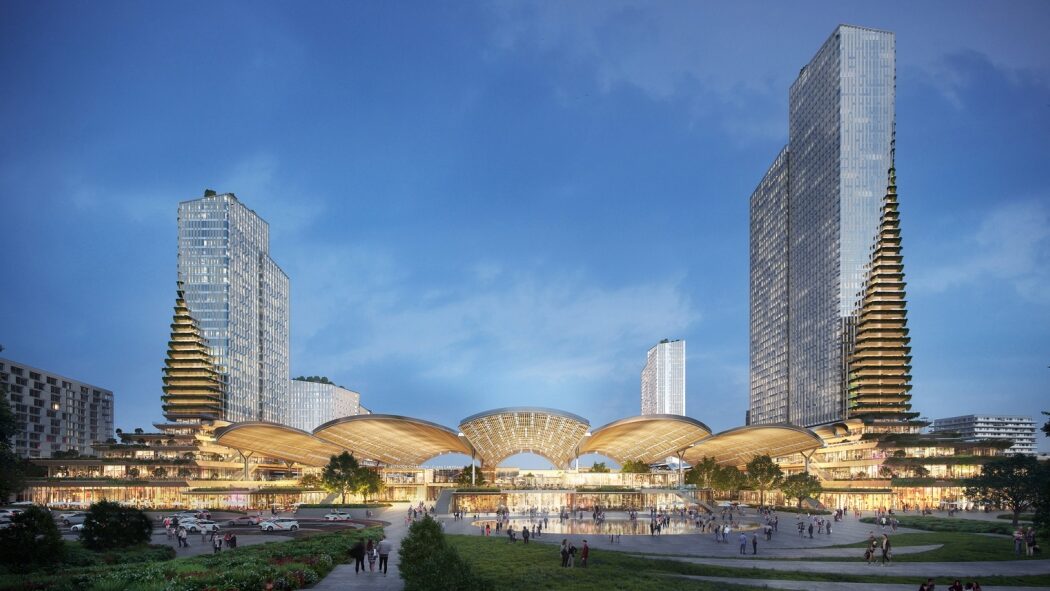On December 15, 2022, Adif Alta Velocidad (Adif AV)—a public company within the Spanish Ministry of Transport, Mobility and the Urban Agenda—announced that the design proposal submitted by Amsterdam-based UNStudio, with b720 Arquitectura and engineering firm Esteyco, had been named as the winning proposal in the competition for the integral renovation and redesign of Madrid-Chamartín Clara Campoamor and its urban integration in the heart of Spain‘s capital city, Madrid.
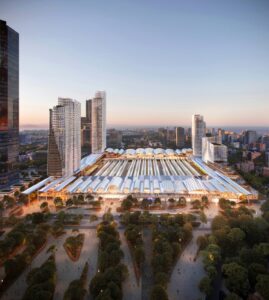 The proposal was nominated by a 16-member jury. Other shortlisted teams included BIG, Foster + Partners, OMA, Zaha Hadid Architects, Grimshaw, RSHP and Souto de Moura.
The proposal was nominated by a 16-member jury. Other shortlisted teams included BIG, Foster + Partners, OMA, Zaha Hadid Architects, Grimshaw, RSHP and Souto de Moura.
Ben van Berkel, founder and principal architect of UNStudio, said “We are truly delighted that our design has been nominated as the winning proposal for this extremely exciting urban regeneration project. Madrid is fast becoming one of the most exciting and attractive cities in Europe. The transformation of this area will invigorate this part of the city while adding new green lungs to Madrid. We are thrilled to have worked with the best possible local partners on this proposal, as collaboration was key to our team’s success.”
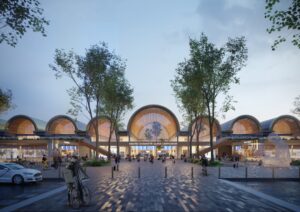 The international competition was launched in 2020 by Adif Alta Velocidad (AV) to transform the Madrid-Chamartín Clara Campoamor railway hub into an international benchmark for sustainable, multimodal, connected and integrated mobility.
The international competition was launched in 2020 by Adif Alta Velocidad (AV) to transform the Madrid-Chamartín Clara Campoamor railway hub into an international benchmark for sustainable, multimodal, connected and integrated mobility.
UNStudio, b720 Arquitectura and Esteyco’s proposal, christened ‘Open ecosystem’, unanimously obtained the maximum possible score from the jury, which considered aspects such as functionality – railway, commercial and tertiary – constructive feasibility, accessibility and integration into the city, environmental sustainability and inclusivity, with the aim of turning the Chamartín complex into an urban and architectural reference in Madrid.
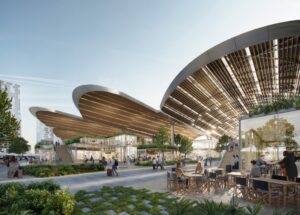 A key element that the team deemed essential in the proposed design was to retain and respect the historical vaulted roofs of Chamartín station, recognizing them as a singular and identifying element of the station.
A key element that the team deemed essential in the proposed design was to retain and respect the historical vaulted roofs of Chamartín station, recognizing them as a singular and identifying element of the station.
Stepped terraces are then added to generate permeability with the surrounding city, while urban balconies open views over the station and integrate the complex into its surroundings. The station therefore forms a porous extension to the new parks located on either side of the complex.
Ben van Berkel continued, “Our main focus was to retain and improve the existing station complex and to activate its surroundings with a careful mix of fast and slow programme; to design a highly sustainable future-proof urban hub, while densifying and truly activating the area with working, living, leisure and learning. The new station area will vastly improve this part of the city, attracting new flows of people and bringing quality of life in this part of Madrid to the next level.”
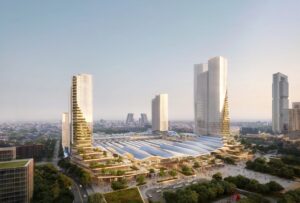 Flanked by new towers and fronted by a public square, the proposed new station hosts a wide array of commercial programs.
Flanked by new towers and fronted by a public square, the proposed new station hosts a wide array of commercial programs.
In the design, the complex is transformed into a large urban courtyard that serves as a fully integrated mobility hub that provides easy access to other modes of transport, such as taxi, metro and active mobility (pedestrians, bicycles, scooters).
The integrated sustainability strategy responds to the criterion of an adaptable and inclusive infrastructure: accessible, digitized, last mile logistics and urban design, designed for pedestrians and local mobility; doubling capacity and organizing flows.
All renderings are by bucharest.studio, Play-Time, b720.

